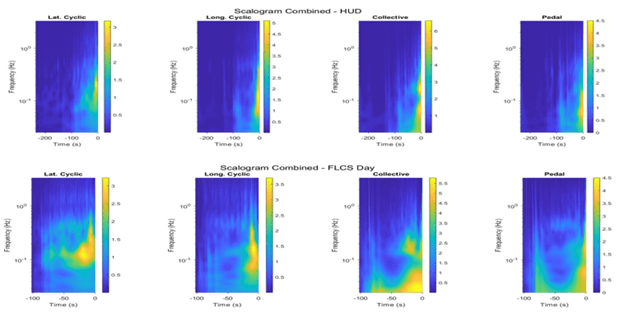Looking 10-20 years into the future, in the rapidly advancing world of autonomous, special ops, cargo, and medevac aircraft, all of the basic aviation functions will likely be handled completely and competently by Al agents embedded within air vehicles. Under nominal conditions (and many basic off-nominal situations) the Al-controlled vehicle will operate autonomously and independently without input from onboard […]
Investigation of Critical Attributes for Transparency and Operator Performance in Human Autonomy Teaming (TOPHAT) for Intelligent Mission Planning

Teams tend to be high-performing when they have an accurate shared mental model. A shared mental model (SMM) is the understanding of the exterior world, as well as who within a team has both the ability to perform certain tasks as well as the responsibility to see that they are performed correctly. It incorporates understanding bout who […]
Real-time guidance algorithms for helicopter shipboard landing

Helicopter shipboard landing is one of the most challenging operations for pilots to execute owing to the random ship deck motion, turbulence due to airwake interactions, and poor visibility due to sea sprays, weather conditions and at night. Active research in this field has been focused on developing schemes to either autonomously pilot the vehicle […]
Impact of Shared Mental Models on Human-AI Interaction and Mission Effectiveness
Human teams are most effective when the members of the team utilize a shared mental model (SMM), meaning a shared perception of goals and actions through effective communication and an understanding of their fellow team members’ goals and likely methods. Currently humans and AI teams share no such model. At best, humans working closely with […]
NSF NRI-Small: Understanding Neuromuscular Adaptations in Human-Robot Physical Interaction for Adaptive Robot Co-Workers
The goal of this award is to develop theories, methods, and tools to understand the mechanisms of neuromotor adaptation in human-robot physical interaction. Human power-assisting systems, e.g., powered lifting devices that aid human operators in manipulating heavy or bulky loads, require physical contact between the operator and machine, creating a coupled dynamic system. This coupled […]
NSTRF – Decision Support System Development for Human Extravehicular Activity
Human spaceflight is arguably one of mankind’s most challenging engineering feats, requiring carefully crafted synergy between human and technological capabilities. One critical component of human spaceflight pertains to the activity conducted outside the safe confines of the spacecraft, known as Extravehicular Activity (EVA). Successful execution of EVAs requires significant effort and real-time communication between astronauts […]
ONR – Interactive Machine Learning
We are interested in machines that can learn new things from people who are not Machine Learning (ML) experts. We propose a research agenda framed around the human factors (HF) and ML research questions of teaching an agent via demonstration and critique. Ultimately, we will develop a training simulation game with several nonplayer characters, all […]
ONR STTR – Designing Contextual Decision Support Systems
Support improved decision making under high stress, uncertain operational conditions through the development of proactive, context-based decision support aids. The objective of this project is to create a scientifically-principled design specification and prototype concepts for a set of decision aids capable of supporting decision making and judgment across multi-faceted mission with dynamic tasking requirements. The […]
ONR – Overall Decision Making Process Simulation
Decision makers are consistently asked to make decisions about the course of action required to achieve mission success regardless of the time pressure and the quantity and quality of information available. To be successful, they will adapt their decision strategies to the environment and even use heuristics, simple rules that use little information and can […]
NASA Authority & Autonomy 2010-2013
NextGen systems are envisioned to be composed of human and automated agents interacting with dynamic flexibility in the allocation of authority and autonomy. The analysis of such concepts of operation requires methods for verifying and validating that the range of roles and responsibilities potentially assignable to the human and automated agents does not lead to […]
